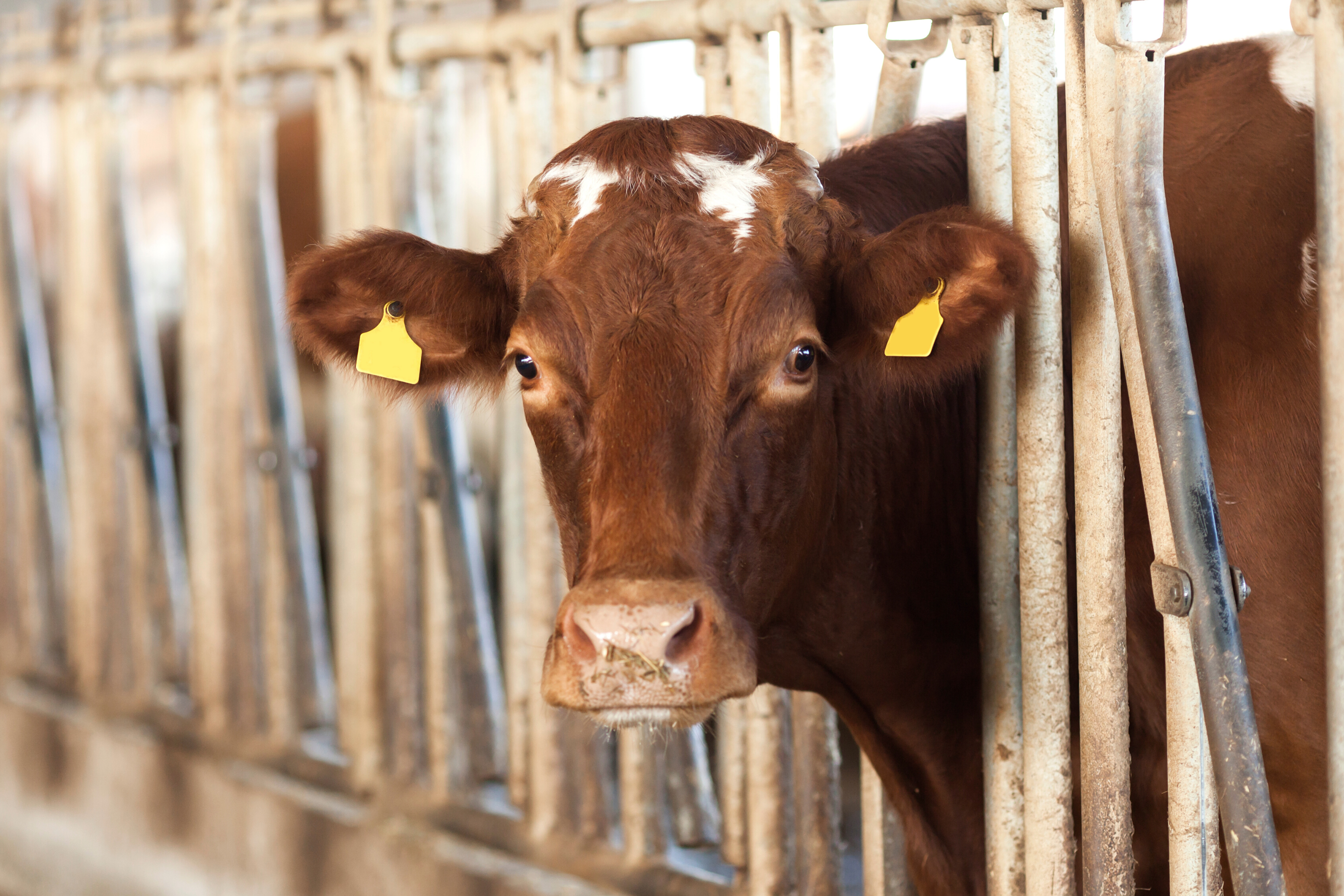
Even Farmed Animals Are Used and Abused in Research
When most of us think of animal research, we don’t picture the victims as farmed animals–cows, pigs, sheep, goats, horses, chickens, and others exploited by the billions each year, in one form or another. But, unfortunately, we should.
Farmed animals are brutally exploited, harmed, and sacrificed by the animal research industry in both agriculture-related and biomedical research.
Agriculture-Related Research
Non-human animals used for agriculture-related research have no protections under existing animal welfare laws—and the resulting absence of reporting requirements means we have no idea how many non-human animals are subjected to this kind of cruelty.
What we do know, however, is that each year, approximately 1.5 billion taxpayer and private dollars support the animal agricultural industry’s efforts to increase its profits by:
- Optimizing the “production efficiency” of animal products through genetic selection, growth promoting drugs, and antibiotics;
- Maximizing the public’s consumption of animal products; and
- Investigating food safety risks, zoonotic diseases, pollution, and other consequences of intensive animal confinement.

Altogether, as The New York Times writes, “scientists are using surgery and breeding techniques to re-engineer the farm animal to fit the needs of the 21st-century meat industry. The potential benefits are huge: animals that produce more offspring, yield more meat and cost less to raise. There are, however, complications.” By way of example, at the federally-funded U.S. Meat Animal Research Center:
- Pigs are made to bear 14—rather than the usual 8—piglets per litter. Many of their babies are crushed to death or otherwise die on factory farm floors. Those pigs bred “lean” are subjected to ovarian and brain surgeries aimed at increasing their fertility.
- Cows are forced to bear two or three calves at a time, often struggling to give birth from their intentionally enlarged wombs, watching many of their young die during birth or shortly thereafter at four times the rate of single calves, and fighting to raise calves with significant deformities. They are rendered immobile by cagelike devices before being enclosed with multiple bulls for the study of “sexual libido”–at least one teenage cow died after being mounted by bulls for hours, breaking both her back legs and “[tearing] up” her body.
- Pregnant ewes are injected with so much testosterone to create larger lambs that their babies struggle to urinate due to genital deformities. As researchers pursue “easy care” sheep that cost less money for ranchers, many ewes are forced to bear triplets alone in fields where their babies are killed by predators, die from the elements, or starve.
Biomedical Research
Unlike those beings utilized for agriculture-related research, farmed animals used for biomedical research are–with the exception of chickens and birds–included within the scope of the Animal Welfare Act. As a result, we know that their numbers have increased in recent years, and that, in 2021 approximately 10% (or 144,000) of the over 1.4 million reported non-human animal research subjects were farmed animals, including at least:

Farmed animals may well be the most broadly exploited of all non-humans.
Not only are they commodified for food, fibers, and entertainment, but they are enslaved by researchers seeking to render their abuse and killing more profitable and utilizing them as substitutes for humans in medical studies.
Next time we envision a research laboratory–and we imagine looking into a dark cage, into the eyes of a scared, suffering, sentient being who deserves liberation–perhaps the eyes looking back at us will be porcine, bovine, or equine.
Perhaps they will inspire us to see the inherent interconnectedness of efforts to free non-human animals from agricultural facilities and those to free non-humans from research laboratories. And, perhaps they will spur you to join us in rising up against animal experimentation. For all.
Please support our work to end cruel, needless animal experimentation once and for all. Your donation, small or large, helps us expose the truth, increase public support, advance human-relevant research methods, and save animals from exploitation in labs.
Donate Now
